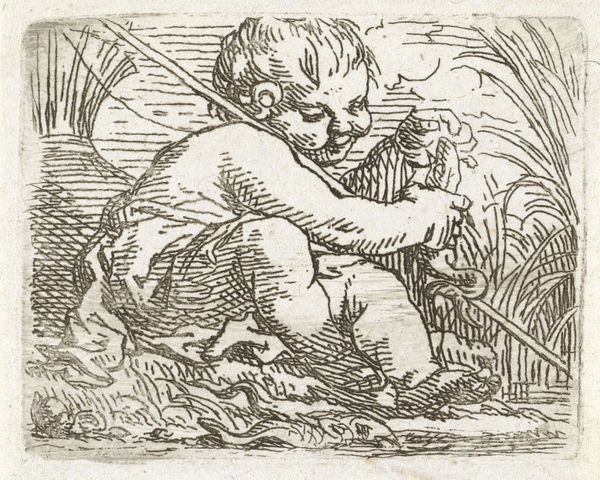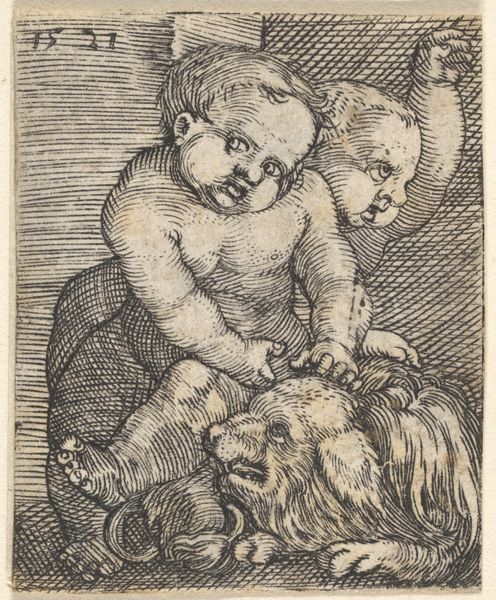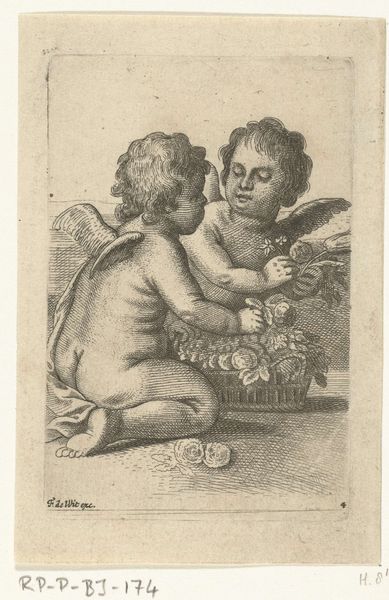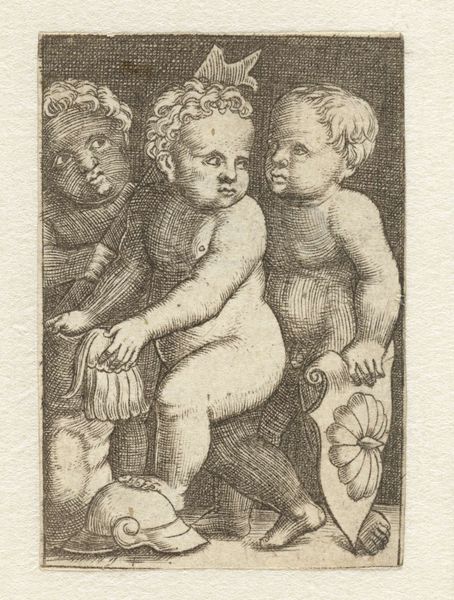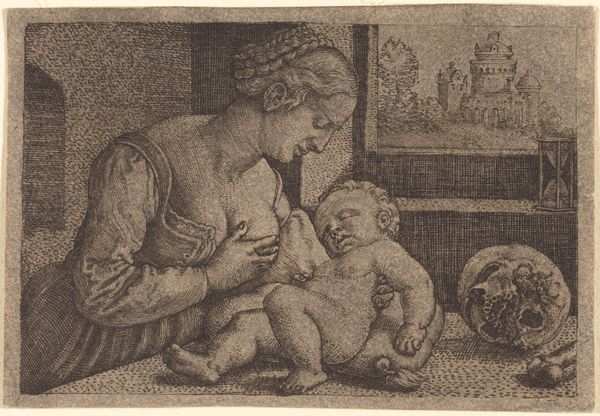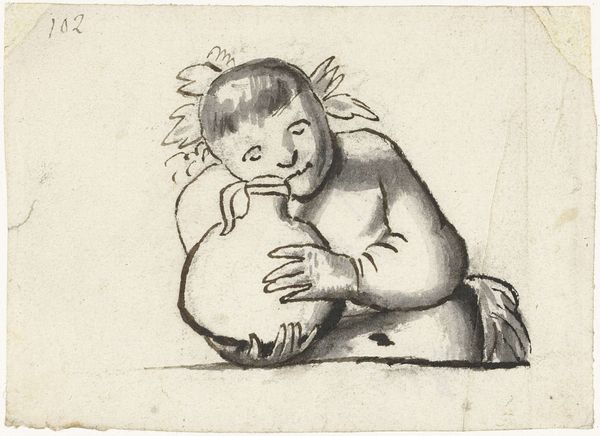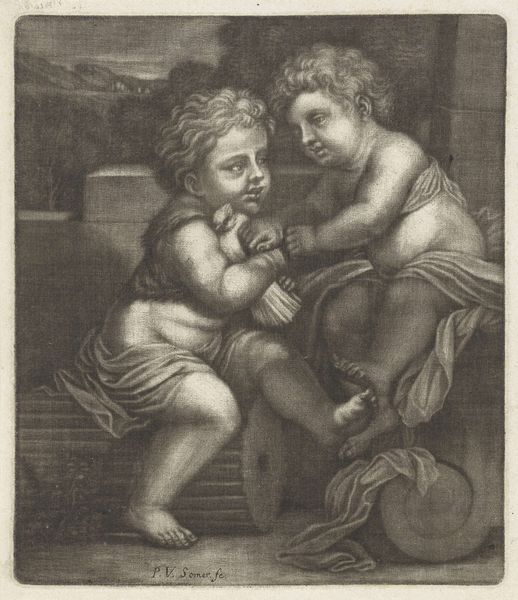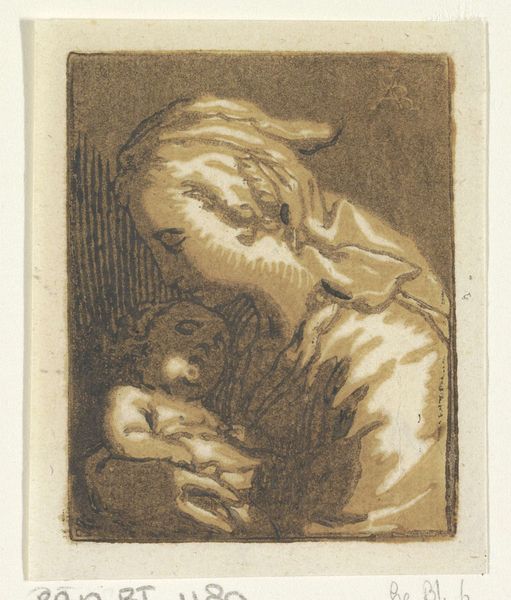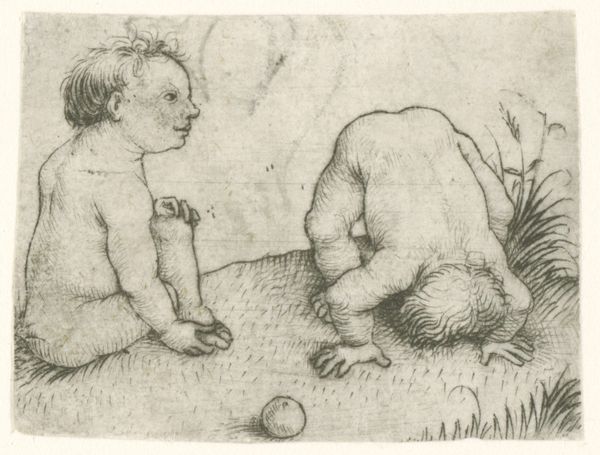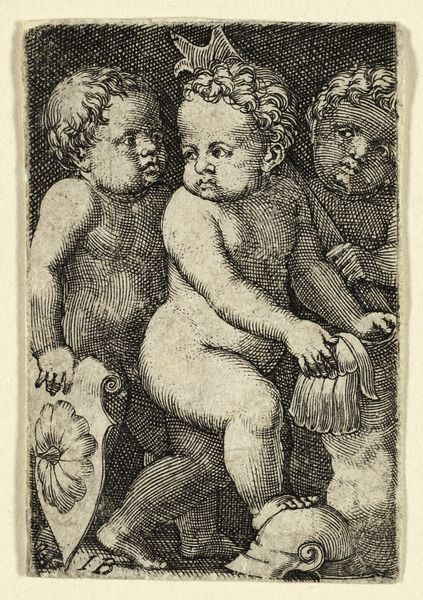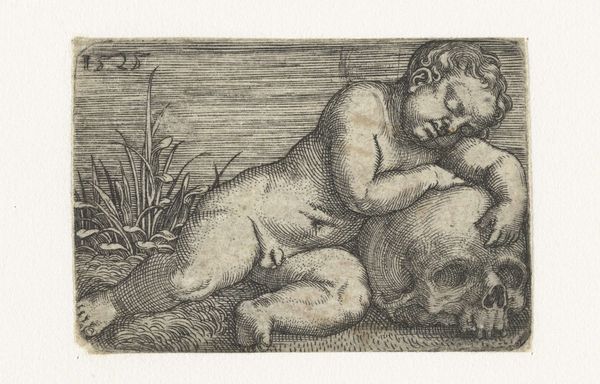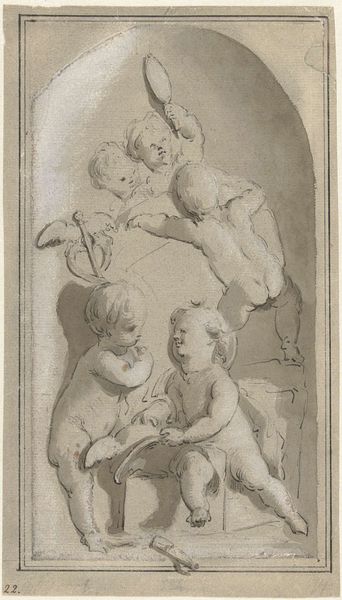
drawing, print, engraving
#
portrait
#
drawing
#
animal
# print
#
dog
#
figuration
#
11_renaissance
#
line
#
northern-renaissance
#
nude
#
engraving
Copyright: Rijks Museum: Open Domain
Curator: "Naakt meisje met een hond," or "Nude Girl with a Dog," created sometime between 1510 and 1550 by Sebald Beham. It’s a print, specifically an engraving. Editor: It's quite touching, really. A vulnerable child, seemingly asleep, cuddled up with a dog, rendered with such fine, deliberate lines. The overall effect feels surprisingly tender. Curator: Absolutely. Let's consider the material process itself. Beham, an engraver associated with the German Renaissance, worked meticulously on a copper plate, carving lines to create tonal variation, and finally, numerous impressions of this scene could be printed and distributed. We're seeing labor transformed into art, a process reflecting early modern methods of artistic reproduction and distribution of content to an early consuming audience. Editor: And within that distribution, a potent image of domesticity and perhaps innocence, right? Dogs often serve as symbols of loyalty and protection, and a vulnerable child clinging to it adds to an allegory about security and love in precarious times. Beham operated in Reformation-era Germany—times of massive political and social upheaval. How might this imagery speak to the need for such qualities, not just within individual homes but on a grander social scale? Curator: Intriguing. The scale, however, is also worth noting. Engravings like this would have been relatively small, personal items – less grand pronouncements and more portable commentaries. Who owned such things? And how did this act of viewing small, meticulously-produced printed works change daily lives? I think these mass produced images shifted both material culture and value systems related to consumption and labor in that time period. Editor: Mass produced, yes, but remember the context. Access to such images would still have been highly mediated, tied to education, wealth, and social standing. Considering that nudes during this period also carried varying connotations of the exotic, erotic, and symbolic virtue, how do we read its messages within this specific moment of its circulation? The print offers intimacy, certainly, but also poses broader questions around privilege. Curator: Right, that contrast is key. It's in this collision of process and content, the scale and symbolic weight that its meaning truly emerges for me. Editor: A vital point, I concur. This piece reflects our understanding of material constraints during the German Renaissance, along with symbolic concerns about care.
Comments
No comments
Be the first to comment and join the conversation on the ultimate creative platform.
